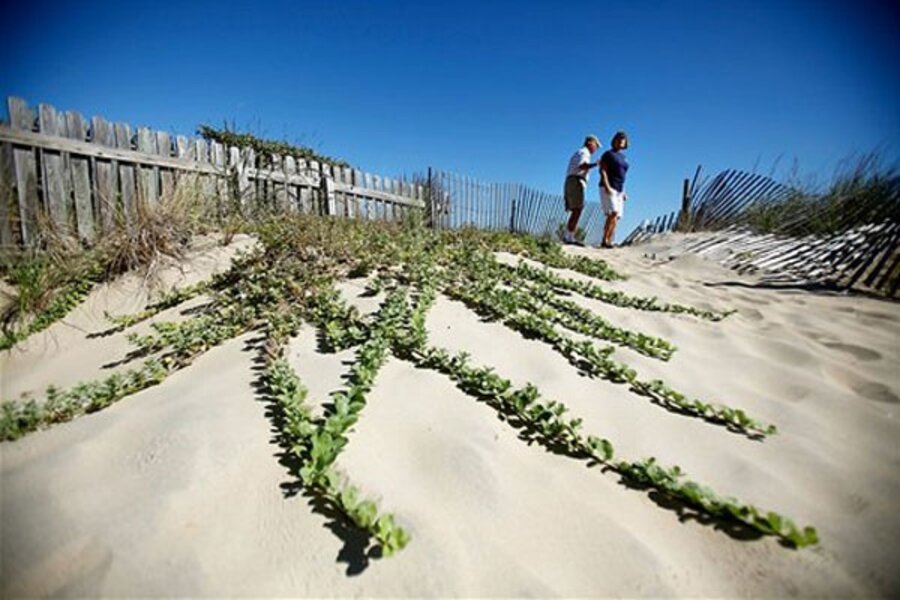Invasive plant invades Virginia Beach dunes
Loading...
| VIRGINIA BEACH, Va.
It's tough, kind of pretty, and poised to wreak havoc, say environmental officials who have discovered for the first time in Virginia Beach a fast-growing Asian plant that thrives on dunes and crowds out native species.
The plant, called beach vitex, wasn't spread by birds or the wind. People planted it in Sandbridge to stabilize dunes and add greenery to barren beach yards.
Now, officials are scrambling to combat what they've derisively dubbed "coastal kudzu" before it spreads, especially into the Back Bay National Wildlife Refuge. Some Sandbridge residents have joined the fight. Other people say they like the plant because it's one of the few things that will grow in the sandy soil.
The green-leafed woody shrub with small purple flowers and pea-sized seeds has been found in 30 to 40 places, mostly in the front yards of homes, says Cheryl Petticrew, a resident working to get rid of it. The plant's long runners, which can grow 10 feet a year, are creeping over dunes toward the beach.
"If we leave it unchecked it could be down where people put their towels in a couple of years," Ms. Petticrew says.
Beach vitex was imported as a beach stabilization plant from Korea in 1985. It is now illegal in North and South Carolina, where the dense plant can overtake dunes and block newly hatched sea turtles from getting to the ocean. It quickly dominates dunes, even secreting a waxy substance that blocks water from seeping through the sand to other plants.
"This plant is very aggressive and the sooner you get on it the better," says Betsy Brabson, who heads the South Carolina Beach Vitex Task Force. "We've learned that you can't turn your back on it."
Norfolk is having some success killing it with herbicide, but it's been tougher than expected, says Lee Rosenberg, Norfolk's environmental manager who heads a local beach vitex task force.
"I thought that after we treated it that would be the end of it," he says. "I underestimated how tenacious this plant is."
Beach vitex is unfazed by drought and salt, making it a seductive choice for beach gardeners such as Karen Thomas of Sandbridge, who has some at her home. It's sold in some local nurseries.
"There are very few things that grow here, and this grows wonderfully," Ms. Thomas says. "I understand there are a million issues, but I like this plant because it grows. The thing with declaring war on it seems like too much government intervention."
Unlike in Norfolk, most of the Sandbridge beach vitex is on private land, which complicates eradication efforts. Clay Bernick, Virginia Beach's environmental manager, says the city is creating a program to aid property owners who want government help getting rid of it.
The plant is not illegal in Virginia, but was recently added to a state list of invasive species.
Thomas said beach vitex seems to stabilize her dunes, the plant's original purpose. Officials disagree, arguing that beach vitex's roots are much shallower than those of native plants, which means it actually increases erosion.
"If this plant takes over, it really creates a lot of instability in the dune system," Mr. Bernick says. "Our dunes are fragile enough."
Editor’s note: For more on gardening, see the Monitor’s main gardening page, which offers articles on many gardening topics. Also, check out our blog archive and our RSS feed. You may want to visit Gardening With the Monitor on Flickr. Take part in the discussions and get answers to your gardening questions. If you join the group (it’s free), you can upload your garden photos and enter our contests.





